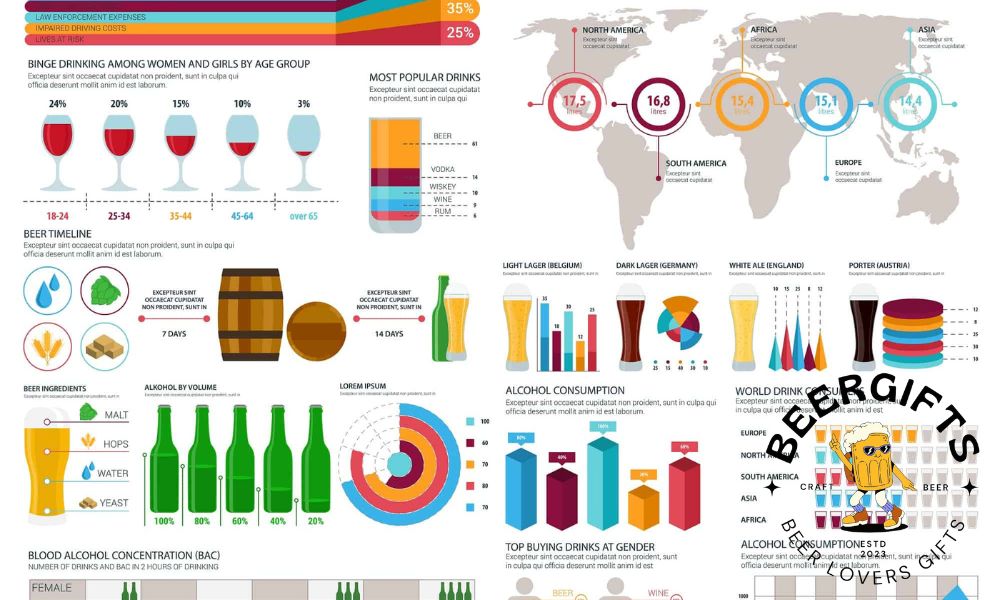Discover the surprising truth behind how body weight affects how many beers it takes to feel tipsy or drunk.

Image courtesy of Pixabay via Pexels
Table of Contents
Alcohol consumption is a common social activity worldwide. Whether it’s a casual gathering with friends or a celebration, many individuals indulge in a few drinks from time to time. However, there is often confusion and curiosity surrounding the question of how many beers it takes to get drunk. In this blog post, we will delve deep into the science behind alcohol intoxication to shed light on this intriguing question.
Understanding Alcohol Metabolism
When you consume alcohol, it enters your bloodstream through the stomach and small intestine. The body then begins to metabolize the alcohol in a process that primarily takes place in the liver. The rate at which alcohol is metabolized can vary depending on individual factors such as body weight, gender, and liver function.
Body weight plays a significant role in alcohol metabolism. Generally, individuals with a higher body weight tend to have a higher blood volume, which can dilute the alcohol content and slow down its absorption. As a result, it may take more beers for a person with a higher body weight to feel drunk compared to someone with a lower body weight.
Gender is another factor that influences alcohol metabolism. In general, women tend to have a higher percentage of body fat and lower water content in their bodies than men. Since alcohol is water-soluble and women typically have less water to dilute it, they may reach higher blood alcohol concentrations more quickly than men of the same weight.
Additionally, liver function plays a crucial role in alcohol metabolism. The liver produces enzymes that help break down alcohol into substances that can be eliminated from the body. Individuals with healthier livers may metabolize alcohol more efficiently and experience less intoxication compared to those with liver conditions or damage.
Individual Tolerance Levels
It’s essential to recognize that everyone’s tolerance to alcohol is different. Factors such as genetics, age, and regular drinking habits can all influence how well someone can handle alcohol. Some individuals may have a genetic predisposition to metabolize alcohol more quickly, while others may have a lower tolerance due to genetic factors.
Age also plays a role in alcohol tolerance. As we age, our bodies may become less efficient at metabolizing alcohol, leading to increased intoxication from the same amount of alcohol compared to when we were younger. Additionally, regular drinkers may build up a tolerance to alcohol over time, requiring more drinks to achieve the same level of intoxication.
Factors Influencing Intoxication
Several other factors can influence how quickly someone gets drunk after consuming alcohol. One significant factor is food consumption. Eating a meal before or while drinking can slow down the absorption of alcohol into the bloodstream and help reduce the intensity of intoxication. On the other hand, drinking on an empty stomach can lead to faster alcohol absorption and a quicker onset of intoxication.

Image courtesy of via Google Images
Hydration is another crucial factor to consider when drinking alcohol. Staying hydrated can help the body process alcohol more efficiently and reduce the risk of dehydration, which can exacerbate the effects of alcohol intoxication. It’s essential to drink water alongside alcoholic beverages to maintain proper hydration levels.
Mixing alcohol with other substances, such as prescription medications or illicit drugs, can also significantly impact intoxication levels. Combining alcohol with certain substances can increase the risk of dangerous side effects and enhance the effects of both the alcohol and the other substance.
Conclusion
Ultimately, the question of how many beers it takes to get drunk is not a one-size-fits-all answer. It depends on a variety of factors, including individual metabolism, tolerance levels, and external influences. It’s crucial to approach alcohol consumption responsibly, know your limits, and prioritize safety when drinking.
By understanding the science behind alcohol metabolism and the factors that influence intoxication, individuals can make informed decisions about how much alcohol to consume and how to minimize the risks associated with excessive drinking. Remember, it’s always better to err on the side of caution and drink in moderation to ensure a safe and enjoyable drinking experience.
FAQs
Question 1: How does body weight affect how many beers it takes to get drunk?
Answer 1: Body weight can influence alcohol metabolism by affecting blood volume and dilution of alcohol content. Heavier individuals may need more beers to feel intoxicated due to a higher blood volume.
Question 2: Is it true that women get drunk faster than men?
Answer 2: Yes, women generally have a higher percentage of body fat and lower water content, leading to quicker alcohol absorption and higher blood alcohol concentrations compared to men of the same weight.
Question 3: How does age impact alcohol tolerance?
Answer 3: As we age, our bodies may become less efficient at metabolizing alcohol, resulting in increased intoxication from the same amount of alcohol. Older individuals may experience stronger effects from alcohol consumption.
Question 4: What other factors can influence intoxication levels?
Answer 4: Factors such as food consumption, hydration levels, and mixing alcohol with other substances can all impact how quickly someone gets drunk. Eating before drinking, staying hydrated, and avoiding mixing alcohol with medications or drugs are essential for responsible drinking.
Generated by Texta.ai Blog Automation
Leave a Reply